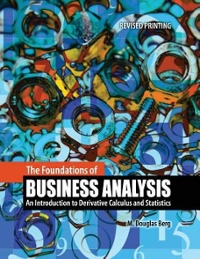Question
QUESTION 6 Which one of the following will increase the present value of an annuity? A. Payment of annuity in the end instead of payment
QUESTION 6
- Which one of the following will increase the present value of an annuity?
| A. | Payment of annuity in the end instead of payment at the beginning. | |
| B. | Lowering the discount rate. | |
| C. | Reducing the future value of the cash flow. | |
| D. | Increasing the number of payments. | |
| E. | Lowering the payment amount. |
QUESTION 7
- Which is the best definition of a perpetuity?
| A. | The interest rate charged per period multiplied by the number of periods per year. | |
| B. | An annuity for which the cash flows occur at the beginning of the period. | |
| C. | An annuity in which the cash flows continue forever. | |
| D. | A level stream of cash flows for a fixed period of time. | |
| E. | A constant stream of cash flows without end that is expected to rise indefinitely. |
QUESTION 8
- Which is the best definition of an effective annual rate (EAR)?
| A. | The interest rate expressed as if it were compounded once per year. | |
| B. | A level stream of cash flows for a fixed period of time. | |
| C. | An annuity for which the cash flows occur at the beginning of the period. | |
| D. | The interest rate expressed in terms of the interest payment made each period. Also, quoted interest rate | |
| E. | The interest rate charged per period multiplied by the number of periods per year. |
QUESTION 9
- Which one of the following statements is true concerning bond ratings?
| A. | Bond ratings are based on both the risk of default and the interest rate risk. | |
| B. | All else equal, a bond rated BB should pay a higher return than a bond rated B. | |
| C. | A bond rated BBB or lower is considered a junk bond. | |
| D. | Bond ratings are based only on the risk of default. | |
| E. | By mutual agreement, DBRS and Standard & Poor's issue comparable ratings on all bonds. |
QUESTION 10
- When a bondholder is granted the right to force the issuer to repay the bond prior to maturity, the bond:
| A. | Contains a zero-out provision. | |
| B. | Contains a call provision. | |
| C. | Contains a put provision. | |
| D. | Is a convertible bond. | |
| E. | Is an income bond. |
QUESTION 11
- A debenture is:
| A. | An agreement whereby actions of the issuer are limited for the protection of the bondholders. | |
| B. | A bond which pays payments to whoever has physical possession of the bond. | |
| C. | The legal agreement between a bond's issuer and the bondholders. | |
| D. | A secured bond which is backed by specifically-named collateral. | |
| E. | Unsecured debt which generally has a maturity of 10 years or more. |
QUESTION 12
- Which is the best definition of an annuity due?
| A. | The interest rate charged per period multiplied by the number of periods per year. | |
| B. | A level stream of cash flows for a fixed period of time. | |
| C. | The interest rate expressed as if it were compounded once per year. | |
| D. | The interest rate expressed in terms of the interest payment made each period. Also, quoted interest rate | |
| E. | An annuity for which the cash flows occur at the beginning of the period. |
Step by Step Solution
There are 3 Steps involved in it
Step: 1

Get Instant Access to Expert-Tailored Solutions
See step-by-step solutions with expert insights and AI powered tools for academic success
Step: 2

Step: 3

Ace Your Homework with AI
Get the answers you need in no time with our AI-driven, step-by-step assistance
Get Started


